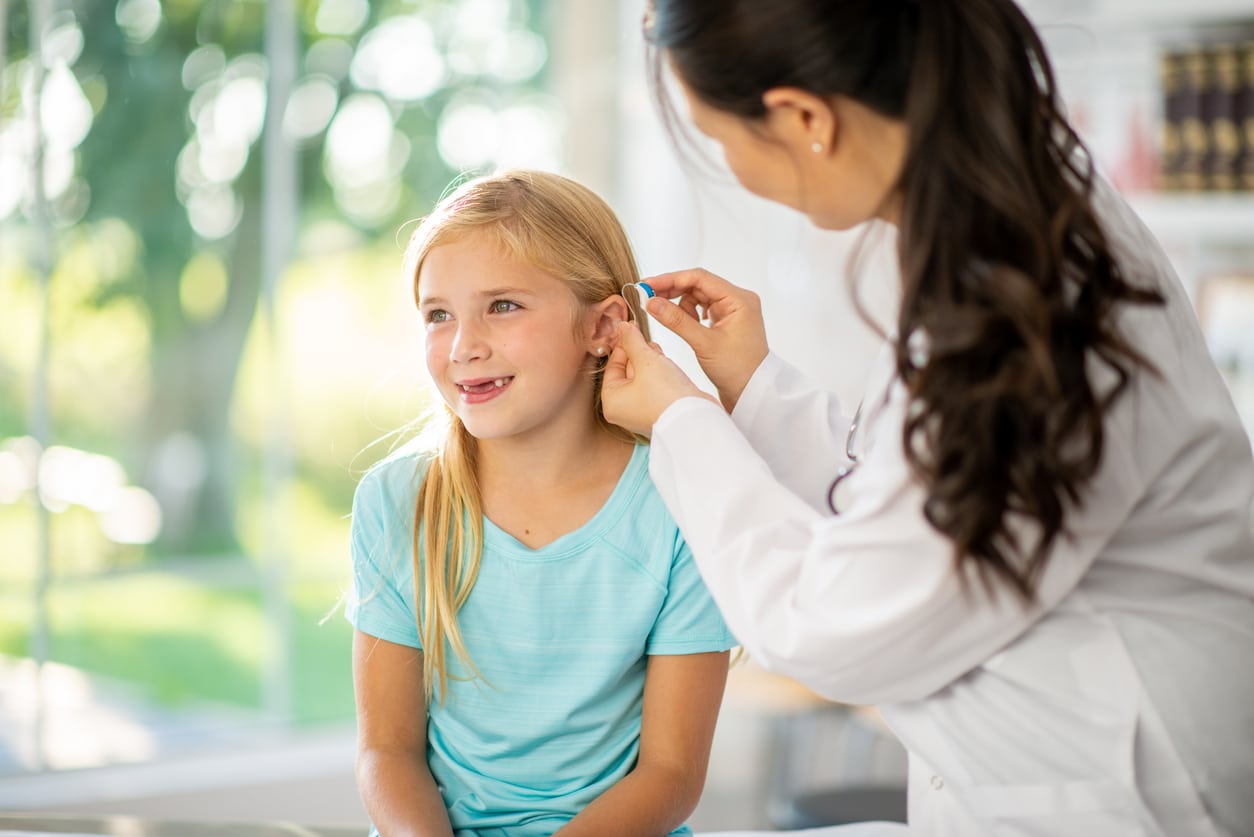Approximately one in 500 infants is born with or develops hearing loss during early childhood (Centers for Disease Control, 2024). If you have hearing loss and are about to or are planning to have a child, it’s natural to worry that you’ll pass the condition down. Let’s take a look at genes, DNA and how we pass on traits to our children.
What to Know About Genes and DNA

Genes inform how your body’s cells move. For example, they may tell your stomach how to digest your favorite Armature Works meal. They also contain information about your growth and development, and help determine physical features like hair color, eye color or height. That’s why children share physical characteristics similar to their parents.
Genes are made of DNA. DNA looks like a twisted ladder, and each step of the ladder is made of four tiny building blocks called A, C, T and G. The order of these letters tells our cells what to do. Sometimes, letters are missing, changed or in the wrong order. When that happens, the DNA might not give cells the information they need, leading to conditions like genetic hearing loss.
What To Know About Gene Inheritance
Every child gets half of their DNA from their mother and half from their father. This DNA is organized into 23 pairs of chromosomes—one from each parent per pair. The first 22 pairs are the same for everyone, but the 23rd pair, called the sex chromosomes, determines a baby’s sex. Girls have two X chromosomes (XX), and boys have one X and one Y (XY). A mother always passes on an X chromosome, while a father passes on either an X or a Y.
Some health conditions are linked to specific chromosomes. If the gene change happens in one of the first 22 pairs, it’s called an autosomal condition. If the change is on the X chromosome, it’s called X-linked or sex-linked.
Different Types of Genetic Hearing Loss
Genetic hearing loss falls into three categories:
- Autosomal dominant. Autosomal dominant hearing loss happens when one parent with the dominant gene for hearing loss, who often has hearing loss, passes it to their child, giving the child a 50% chance of inheriting it.
- Autosomal recessive. Autosomal recessive hearing loss occurs when both parents carry the gene but usually have normal hearing and pass it to their child, who has a 25% chance of hearing loss, often with no family history to suggest a risk.
- X-linked. X-linked hearing loss is passed from a mother carrying the gene on the X chromosome, passing hearing loss onto sons but not daughters.
All children should undergo a hearing screening shortly after birth to identify hearing loss. If you or your partner has hearing loss, contact Kampsen Hearing today to talk to one of our specialists about the possibility of passing it on to your child.